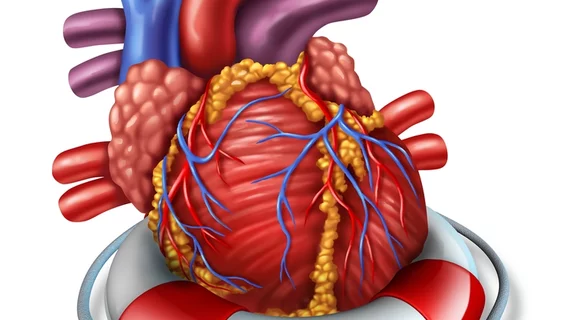Cardiac transplant candidates are better off accepting an organ with a higher risk of transmitting diseases than waiting for another heart, suggests a study published Oct. 29 in the Journal of the American College of Cardiology.
Increased risk donors—who carry an increased risk of inadvertently transmitting diseases such as Hepatitis B, Hepatitis C or HIV to recipients—are growing in number. They comprised 19.5 percent of the organ donor pool in 2015, according to lead author Michael S. Mulvihill, MD, and colleagues, making it important to understand the risks and benefits of accepting these organs.
The authors studied United Network of Organ Sharing data from 2007 to 2017, during which time 2,602 increased donor risk hearts were offered to 10,851 cardiac transplant candidates. Patients who accepted one of these donor hearts demonstrated 92.1 percent survival at one year, compared to 83.1 percent for those who declined the initial offer.
"It's important to understand that patients who turn down an increased risk donor heart don't immediately get offered another, non-increased risk donor heart," Mulvihill, a surgical research fellow at Duke University, said in a press release. "These patients are returned to the waitlist for an uncertain amount of time. We wanted to measure the risks of competing outcomes for these patients compared to patients who accepted the increased risk donor heart."
Of the patients who initially turned down a heart with increased disease risk, 58 percent eventually underwent a transplant from a lower-risk donor, 12.4 percent later accepted an increased-risk transplant, 7.9 percent were removed from the waitlist due to death or decompensation and 21.1 percent were still waiting for a transplant a year after the initial offer.
Mulvihill et al. found the survival benefit associated with accepting an increased risk donor offer continued to five years post-offer.
"Increased risk donor organs offer an opportunity to decrease waitlist mortality for patients awaiting heart transplant," Mulvihill said. "It's worth making sure candidates, clinicians and listing centers discuss the risks and benefits of increased risk donor offers for these patients."
The retrospective analysis didn’t capture patients’ reasons for turning down donor hearts and carries the potential for unmeasured confounders, the authors acknowledged. Rates of disease transmission post-transplantation also went uncaptured, although the survival data suggests the benefit of proceeding with an earlier transplantation likely outweighs the risk of disease transmission.

